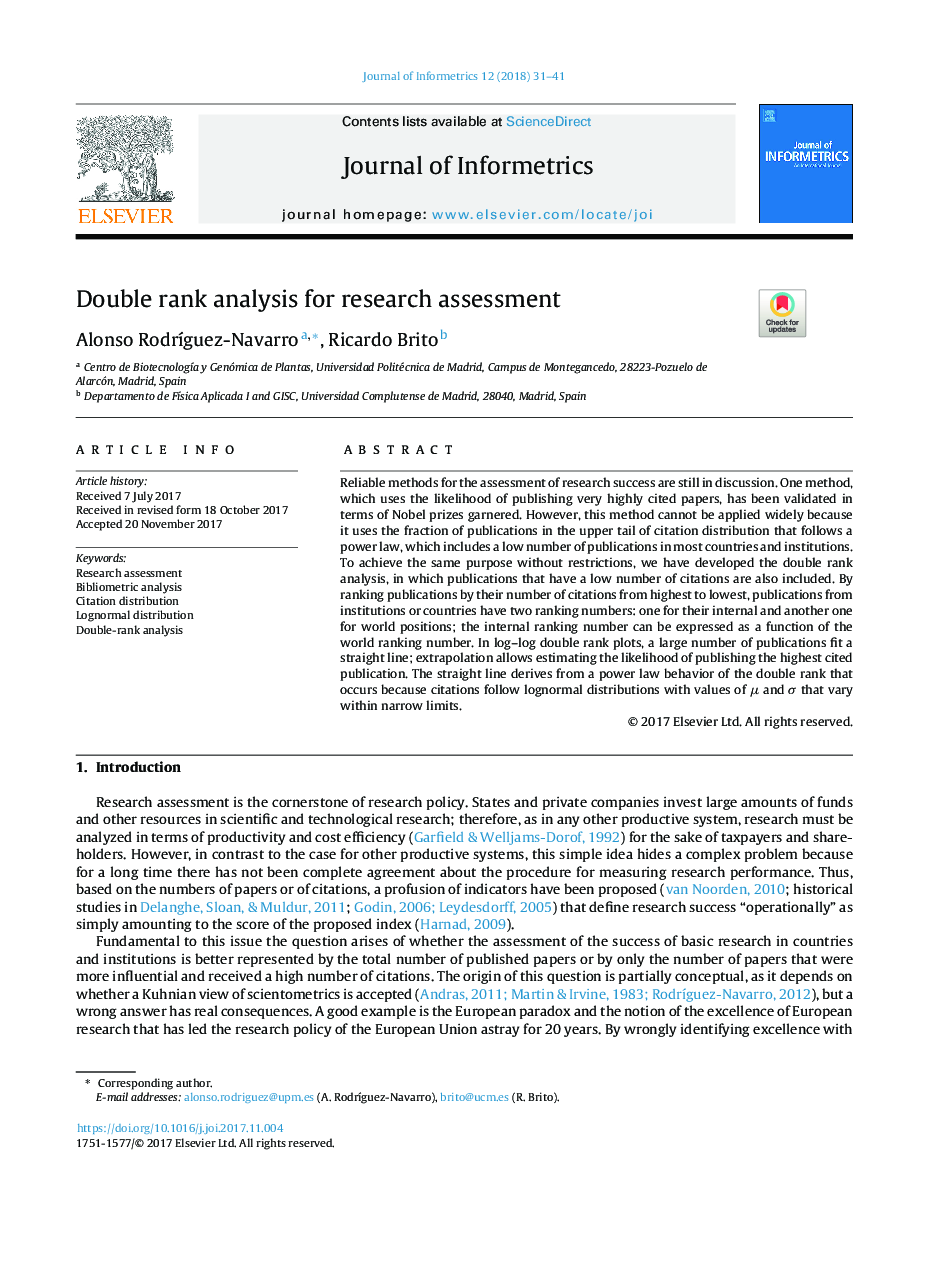| Article ID | Journal | Published Year | Pages | File Type |
|---|---|---|---|---|
| 6934151 | Journal of Informetrics | 2018 | 11 Pages |
Abstract
Reliable methods for the assessment of research success are still in discussion. One method, which uses the likelihood of publishing very highly cited papers, has been validated in terms of Nobel prizes garnered. However, this method cannot be applied widely because it uses the fraction of publications in the upper tail of citation distribution that follows a power law, which includes a low number of publications in most countries and institutions. To achieve the same purpose without restrictions, we have developed the double rank analysis, in which publications that have a low number of citations are also included. By ranking publications by their number of citations from highest to lowest, publications from institutions or countries have two ranking numbers: one for their internal and another one for world positions; the internal ranking number can be expressed as a function of the world ranking number. In log-log double rank plots, a large number of publications fit a straight line; extrapolation allows estimating the likelihood of publishing the highest cited publication. The straight line derives from a power law behavior of the double rank that occurs because citations follow lognormal distributions with values of μ and Ï that vary within narrow limits.
Related Topics
Physical Sciences and Engineering
Computer Science
Computer Science Applications
Authors
Alonso RodrÃguez-Navarro, Ricardo Brito,
